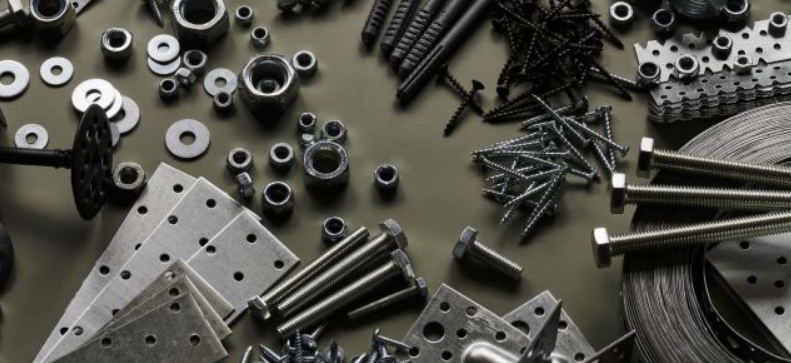Key Takeaways
- Aerospace fasteners play a crucial role in the safety and integrity of aircraft.
- Understanding the types and styles of fasteners can help you select the right components for aerospace applications.
- Material selection is critical to the performance and durability of aerospace fasteners.
- Innovations in aerospace fastener technology are driving improvements in aircraft efficiency and safety.
Introduction
Aerospace fasteners are a cornerstone in the construction and maintenance of aircraft. These small yet vital components ensure the structural integrity and safety of airplanes. Whether you’re an engineer, mechanic, or aviation enthusiast, understanding the role and importance of aerospace fasteners can provide insights into their contribution to modern aviation. Choosing a suitable aerospace fastener involves several considerations, from material selection to the specific type and application. Let’s delve deeper into the various aspects that highlight their importance and critical role in maintaining modern aircraft safety and efficiency.
Types of Aerospace Fasteners
There are various types of aerospace fasteners, each designed for specific applications. Common types include bolts, rivets, screws, and nuts. The top fastener distributors often have a wide range of these critical components, ensuring they meet the industry’s high standards. Selecting the right kind is crucial for ensuring the reliability and performance of the aircraft, as the appropriate fastener will guarantee the structural integrity and longevity of the connections.
Bolts
Bolts are one of the most commonly used fasteners in aircraft. They provide structural solid connections essential for the aircraft’s frame. Typically, bolts are made from high-strength materials such as stainless steel or titanium, making them capable of withstanding significant stress and pressure. Aircraft bolts also often come with corrosion-resistant properties, which are vital given the harsh environments they operate in, including fluctuating temperatures and exposure to moisture.
Rivets
Rivets are used where disassembly is not required. They are lightweight yet strong, making them ideal for the aircraft skin and internal structures. Rivets are essential in areas where welding isn’t feasible or additional weight from other fasteners is undesirable. They come in various types, such as solid rivets, blind rivets, and specialty rivets, each designed for different aircraft parts. Their ability to create a permanent bond that can withstand vibration and dynamic loads is precious in maintaining the overall integrity of the aircraft’s structure.
Screws
Screws are versatile fasteners used for various purposes, including securing panels and components that may need to be removed for maintenance. Their flexibility in design and application makes them indispensable in the aerospace industry. Often crafted from high-strength, lightweight materials, aerospace screws are engineered to remain secure under harsh conditions. Additionally, many aerospace screws feature threads and coatings that provide additional protection against vibration and corrosion, ensuring that components remain safely attached even in adverse conditions.
Nuts
Nuts are often used in conjunction with bolts to create a secure fastening. Their design ensures that the connection remains tight even under stress. Aerospace nuts come in various types, including lock nuts, specifically designed to prevent loosening under vibration. The precision engineering of aerospace nuts means that they provide high reliability, which is critical for maintaining the structural integrity of key aircraft components. Often combined with washers, these elements distribute loads more evenly, further enhancing the durability and security of fastened connections.
Material Selection
The choice of material for aerospace fasteners is critical due to the demanding conditions they must withstand. Common materials include titanium, stainless steel, and aluminum. Each has unique properties that make it suitable for specific applications. Titanium, for example, offers a high strength-to-weight ratio and excellent corrosion resistance, making it ideal for critical areas of an aircraft. Stainless steel is known for its durability and resistance to oxidation, while aluminum is prized for its lightweight properties, contributing to overall fuel efficiency. The selection of materials must balance factors such as weight reduction, strength, thermal stability, and resistance to corrosion and fatigue.
Innovations in Aerospace Fasteners
Recent advancements in aerospace fastener technology have led to improvements in both efficiency and safety. For instance, self-locking fasteners reduce the risk of loosening due to vibration, a common challenge in aviation. These innovations are designed to ensure that fasteners remain secure under extreme conditions, thereby enhancing the overall reliability of the aircraft. Composite fasteners are being developed to work seamlessly with advanced aircraft materials like carbon fiber, which are increasingly used to reduce weight and improve fuel efficiency.
Efficiency Improvements
New designs and materials have significantly improved aircraft efficiency. According to Aviation Pros, research and innovation in aerospace fasteners focus on reducing weight and increasing installation speed without compromising safety. This is especially important in modern aircraft design, where every ounce saved can lead to significant fuel savings and increased range. Innovations such as automated fastening systems and advanced alloys have contributed to faster and more efficient assembly processes, ultimately reducing production costs and shorter build times.
Safety Advancements
Safety is paramount in aviation, and advancements in fastener technology have significantly contributed. Aerospace Technology discusses how new safety features in fasteners enhance the overall reliability of aircraft. Innovations such as fatigue-resistant materials and corrosion-resistant coatings ensure that fasteners can withstand the harsh conditions and repeated stress cycles typical in aerospace environments. These advancements help prevent potential failures that could lead to catastrophic consequences, providing both manufacturers and operators an added layer of safety and peace of mind.
Conclusion
Aerospace fasteners may seem like minor components, but they play an invaluable role in ensuring the safety and efficiency of modern aircraft. Understanding the various types, materials, and innovations in fastener technology can provide valuable insights for anyone involved in the aviation industry. As technologies advance, these small but critical parts will continue to evolve, driving the future of aerospace engineering. The ongoing research and development aimed at enhancing the performance and reliability of aerospace fasteners will likely lead to further improvements in aircraft design, safety, and efficiency, making them indispensable to the industry’s progress.

